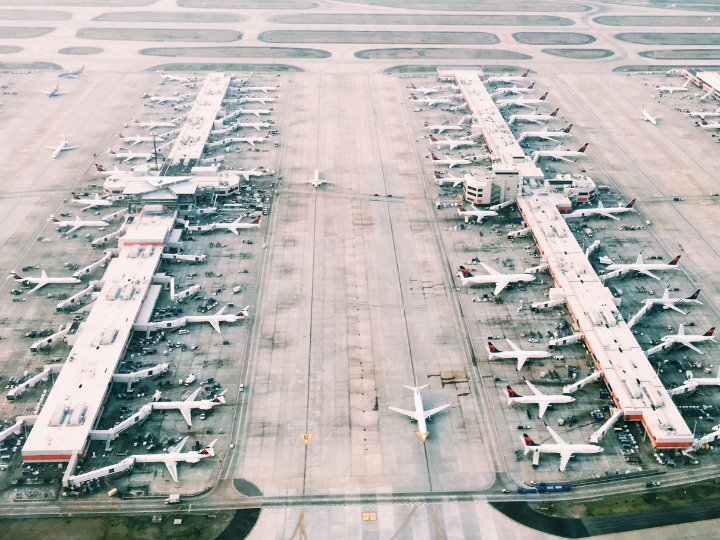by John Holland-Kaye*
Tackling climate change is on everyone’s mind. It’s certainly on mine – daily. As CEO of the UK’s biggest airport, Heathrow, and Chair of the Sustainable Market Initiative’s Aviation Taskforce, removing carbon from flying is our biggest challenge and our most important ambition in both the short and long term.
Aviation is a major contributor to global economic prosperity: unlocking trade, investment, and understanding between cultures. Growth can’t come at any price, and we need to fly without fossil fuel carbon.
Addressing the carbon footprint problem
We already have the answer in Sustainable Aviation Fuel (SAF), which is the only option for long haul flights to decarbonise. Long haul flights are responsible for 70% of global aviation emissions, hence we urgently need to scale up production and drive down costs.
SAF is a critical but, so far, under-utilised tool that can unlock aviation’s goal of net zero emissions by 2050. A proven technology, it was used as far back as WWII to fly fighters when oil was scarce.
SAF is incredibly versatile; it can be used in any existing aircraft without the need for technical modifications and has already powered 250,000 flights around the world; it can be blended with kerosene and soon be used as a complete replacement. This is a critical advantage during the energy transition, since it means that a plane can fly one way on SAF and return on kerosene removing the need for all airports to have a SAF supply.
SAF can be made from waste from agriculture, households, forestry and industry, delivering lifecycle carbon savings of 70% or more. Many developing countries with a large agriculture sector are well placed to become suppliers to this market, increasing their energy independence. In the future, synthetic fuel made using carbon extracted from the air and clean energy has the potential to achieve a 100% carbon saving.
Limited production volumes of SAF means it remains in short supply, subscale and expensive. We need to send clear market signals to scale up supply and bring down costs to make it affordable, particularly for developing countries. Just as in other sectors, we need the right policy framework and market signals.
In October 2022, with the encouragement of global airlines and airports, governments from around the world reached a landmark agreement at ICAO (the UN governing body for aviation) on net zero international aviation by 2050. This now needs to be converted into national policy actions.
The US is furthest ahead in putting support for SAF in place and achieving great results. Airlines have set ambitious targets to buy 3 billion gallons of SAF there by 2030 – well over 10% of total usage. And investors are keenly interested with up to 45 SAF plants planned in the US by 2030. The UK, Canada and Europe are starting to follow suit.
However, governments can take years to put policy in place, and the clock is ticking. So how can big companies send the market signal needed to increase production?
Companies must lead the way
Looking at the air travel carbon footprint of a sample of financial sector organisations, just 30 companies making a commitment to use 30% SAF could account for the first 1% of the 10% by 2030 objective, or even more.
At COP27, the Sustainable Markets Initiative (SMI), in partnership with Clean Skies for Tomorrow, launched a pocket guide to build understanding of SAF among the business community and encourage greater uptake for corporate travel. The guide sets out how businesses can use SAF for their travel and where they can purchase it.
At Heathrow, our “Heathrow 2.0” sustainability strategy shows how we can reach net zero even as we grow. Our goal, with the right supportive UK Government policy, is to go beyond 10% of SAF in use by airlines at Heathrow by 2030, contributing a carbon saving of over 7.5% by that time.
In June 2021, Heathrow was the first UK airport to integrate SAF into its fuel distribution system successfully. More than 60% of our airline partners have committed to at least 10% SAF by 2030 but currently there isn’t enough of it, and these fuels cost more than fossil kerosene.
To send a market signal, we launched our flagship SAF incentive programme, becoming the first airport to link airport charges with SAF usage. This first year of the incentive was designed around a £10 million fund aiming to cover 50% of the cost premium of using SAF. It resulted in approximately 0.5% of SAF use in 2022 – more than any other major airport globally – and whilst this is a small percentage, it saved 55,000 tonnes of CO2.
Complementary Technologies
Whilst SAF will help to remove carbon from flying now, there are complementary technologies being explored for the future, such as electric and hydrogen. As part of a UK aviation consortium, we recently published the most comprehensive study to date on the potential of hydrogen to power a carbon free future for UK domestic aviation by 2040.
The findings revealed the potential of hydrogen fuelled aircraft, suggesting that within the next 20 years, passengers could be flying between all regions of the UK on planes which emit no carbon emissions. This role for hydrogen for regional and short haul flying, alongside electric on short flights and SAF in full use for longer flights, can get aviation to “jet zero”.
However, SAF is the critical technology to get to net zero aviation by 2050. With the right action now, we can protect the benefits of aviation in a world without carbon. The faster we scale up supply, the faster we can decarbonise.
All of us at the World Economic Forum can help lead this just energy transition by committing to purchase at least 30% SAF for our corporate travel by 2030. Please play your part. More information about the SAF buyer’s guide can be found here.
*Chief Executive Officer, Heathrow Airport
**first published in: Weforum.org




 By: N. Peter Kramer
By: N. Peter Kramer
